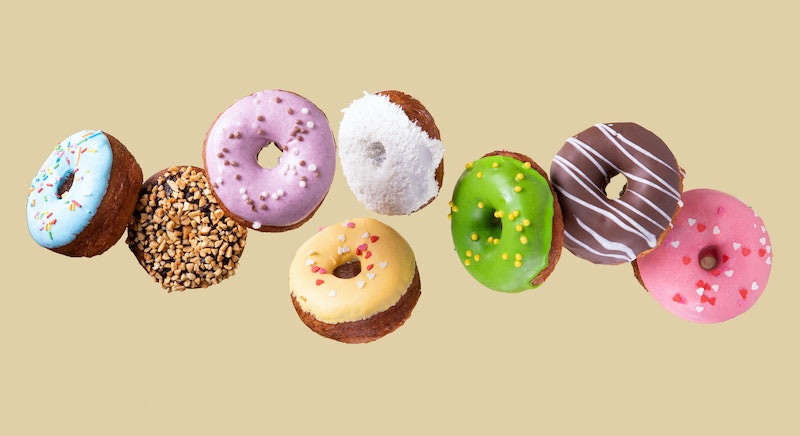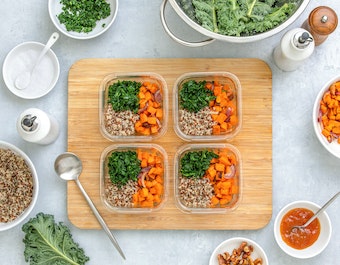When times are hard, there’s nothing quite like warm chocolate chip cookies or pie à la mode to take the edge off. And times, they are hard. Since COVID-19 arrived, snack and processed food sales have soared, to nobody’s surprise.
Indulging in a treat every so often can feel good. But if you’ve been overdoing it on the sweet stuff for a while, the damage from eating all that processed sugar may sneak up on you, and not just in the form of weight gain.
“Sugar is not a friendly molecule,” says Baton Rouge family physician Renee C. Daigle, MD. Elevated blood sugar can damage blood vessels. That damage shows up as inflammation, Daigle says, which can affect joints and cartilage and contribute to swelling that makes you feel bad.
Chronic inflammation has been linked to all kinds of conditions, including cardiovascular disease, cancer, diabetes, arthritis, Crohn’s disease, and ulcerative colitis.
Eating a lot of sugar may also cause you to crave it more. Studies on mice have shown that sugar triggers a release in the brain of the feel-good neurotransmitter dopamine. “Whenever we have sugar,” says Daigle, “pleasure centers in the brain light up.”
If you’re feeling trapped by your sugar cravings lately, have no fear. Here are some tips to help you resist.
Pack your meals and snacks with nutrients
If your body is well fed and nourished with balanced meals, you’ll be less likely to be hungry and crave sweets. If you skip meals, on the other hand, your blood sugar will drop, making you extremely hungry and more inclined to grab whatever is easy and nearby. For many, that means processed, sugary foods.
While there’s no perfect way to design a healthy meal, you can follow the tips at ChooseMyPlate.gov for guidance. Aim to fill half your plate with colorful vegetables and some fruit, says Illinois-based registered dietitian Michele Fumagalli, and choose lean proteins and whole grains. A big salad filled with your favorite vegetables, apple chunks, a handful of roasted almonds, and some quinoa checks all the boxes for a healthy, satisfying lunch.
Have some fiber with those sweets
When you’re feeling down and eat sugar, Daigle says, that quick dopamine hit can make you feel better –– temporarily. To deal with the sugar you’ve just consumed, your pancreas produces the hormone insulin, which helps glucose get into cells to be used for energy. But when you eat too much sugar –– and keep banging that insulin production button –– over time, you can develop insulin resistance, a precursor for prediabetes and Type 2 diabetes that prevents cells from using glucose as they should.
Insulin resistance can make you feel like you’re hungry all the time. To sate yourself, you may end up grabbing something sweet to eat again, launching a sugar cravings cycle.
One way to eat something sweet without a big insulin spike is to do it with fiber. Whole fruit, for example, is sweet, but unlike what happens when you eat sugary cakes and candy, noshing on it “doesn’t produce such a huge rush of insulin,” Daigle says. That’s because digesting a piece of fruit takes more time, thanks to its fiber, which helps the body absorb sugar more slowly.
Dialing back on cookies and candy may feel severe, initially. The first week you cut back, cravings are inevitable, says Daigle, who’s coached clients through sugar scale-backs before. “If you can go without refined sugar for even five days,” she says, “those cravings really do decrease.”
Daigle recommends answering your sweet tooth’s call with frozen grapes, banana slices, or dry dates rolled in unsweetened coconut –– fiber-rich choices that will make you feel more full and satisfied than a doughnut would. An apple may not sound appealing when you want ice cream. But after you’ve eaten it, you may realize it hit the spot after all.
Don’t keep it in the house
Does it ever feel like the ice cream is shouting your name from the freezer?
“Sometimes you have to get to the point where everything like that is gone, and then you can do it,” says Daigle. “It’s a terribly hard thing.”
Don’t be afraid to speed the process by walking your sweets stash to the garbage can outside. Remember, you can’t eat what you don’t buy, so remind yourself that if sweets end up in your grocery cart, they’re probably going to end up in your mouth, too. If you happen to live in the same house as someone who wants sweets for their own consumption, ask them to hide them from you.
Ask yourself why you want it
If you have sweets in the house and find yourself confronting a craving, do a gut check before you indulge. Stop and think before you go searching for the cookies. Sometimes we open the freezer out of boredom. Take a breath and pause. Ask yourself if you’re hungry, bored, stressed, or whether you really want it.
If you really want a particular dessert once in a while, Fumagalli suggests skipping the 100-calorie cookie packs and eating what you really like. “If you’re going to eat the cake or the cookie, get the real thing and enjoy it,” she says. “Tell yourself, ‘I’m going to eat this and savor the heck out of it because it’s delicious. And I’m not going to feel bad about it.’”
Sleep 7-9 hours per night
Research suggests that when you’re sleep deprived, stress hormones rise. Insufficient sleep may also lead you to make unhealthy food choices. When we’re tired, Fumagalli explains, the body wants energy, which can lead us to reach for what’s easy, or whatever’s around.
Try to get the recommended seven to nine hours of sleep a night. Interrupt your midnight snack cycle by getting into bed earlier. If you burn the candle at both ends, you may end up paying for it the next day with cravings. Instead, work on improving your sleep habits. Aim to go to bed and get up at the same time each day. Three hours before bed, close up your kitchen, and no later than 30 minutes before you turn in, power down screens. Relax by taking a warm bath or reading a book. Before it’s time to close your eyes, make your bedroom as dark as possible by moving electronics out of the room, or blocking the glow of bright power buttons and digital alarm clocks.
Drink up
Being well nourished also means being well hydrated. Dehydration is often mistaken for hunger, which can lead to eating. “Start your day with water,” Fumagalli says, “and drink it throughout the day.” Be careful when consuming coffee and alcohol, which are diuretics that can make the body get rid of extra fluid. Fumagalli also recommends downing a glass of water before and after every cup of coffee you drink, and the same before and after a glass of wine. If you’re used to capping off dinner with something sweet, try brushing your teeth instead. “Brushing your teeth puts a different flavor in your mouth,” Fumagalli says. “Sometimes that’s what our palate wants.”
Get moving
Something as simple as moving your body could help you feel less desire for sweets. Over the years, small studies have suggested that brisk walks can curb sugar cravings. In a 2008 study of 25 regular chocolate consumers, a 15-minute, semi-brisk walk once a day reduced chocolate urges. Similarly, a 2014 study of 47 overweight people who routinely snacked on high-cal, sugary foods found that a 15-minute, moderate-intensity walk lessened participants’ cravings for such snacks.
Outside of workouts, many of the things we do every day –– working at desks, winding down in front of the tube –– keep us sedentary. “The body is meant to move,” Fumagalli says, “not meant to sit.” Sneak in movement where you can. Consider investing in a stand-up or treadmill desk. When you feel an urge to splurge coming on, distract yourself with a stroll. Just getting out of the house and away from temptation can help you clear your mind –– and kick that craving to the curb.
RENÉE BACHER
Rally Health





